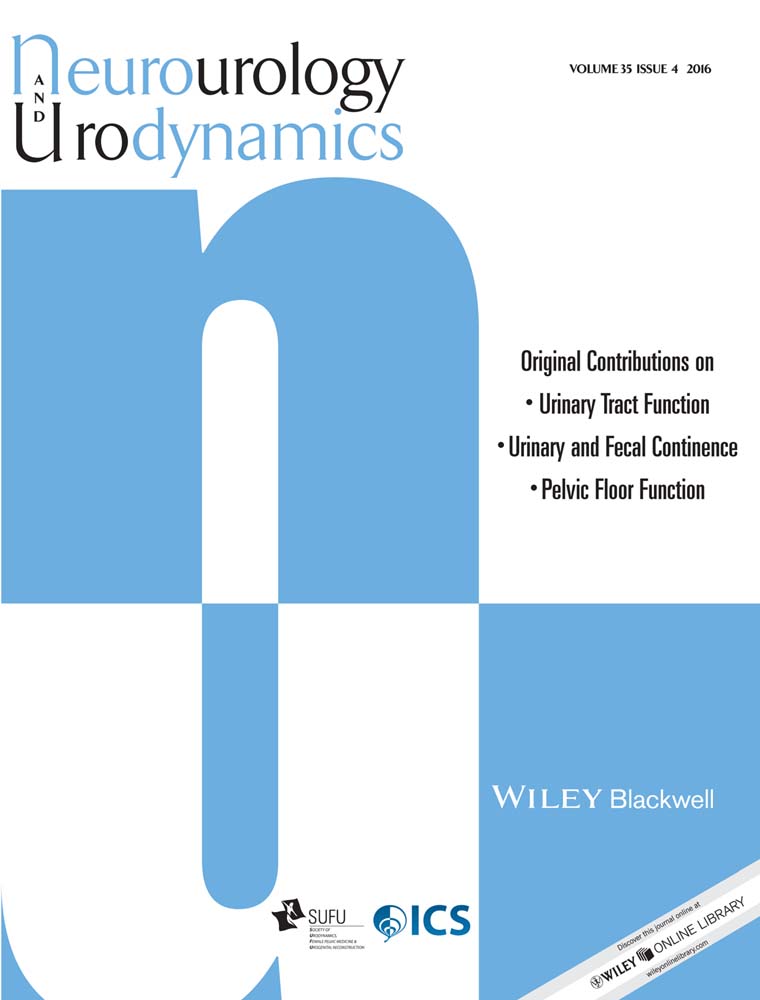Spinal neuronal cannabinoid receptors mediate urodynamic effects of systemic fatty acid amide hydrolase (FAAH) inhibition in rats
Abstract
Aims
To test if urodynamic effects from systemic Fatty Acid Amide Hydrolase (FAAH) inhibition involve sacral spinal cannabinoid type 1 (CB1) or type 2 (CB2) receptors.
Methods
Male rats with or without partial urethral obstruction were used for cystometry or immunohistochemistry. Urodynamic effects of intravenous (IV) 0.3 mg/kg Oleoyl Ethyl Amide (OEtA; FAAH inhibitor), and intrathecal (IT) 5 μg rimonabant (CB1 antagonist) or 5 μg SR144528 (CB2 antagonist) were studied in awake rats.
Results
After administration of rimonabant or SR144528, non-obstructed rats with normal bladder function developed bladder overactivity (BO), which was counteracted by OEtA. OEtA also counteracted BO in obstructed rats. SR144528 did not affect bladder function in obstructed rats but counteracted the urodynamic effects of OEtA. Surprisingly, rimonabant (and AM251, another CB1 antagonist) reduced BO in obstructed rats, whereafter OEtA produced no additional urodynamic effects. CB1 expression increased in the sacral spinal cord of obstructed rats whereas no changes were observed for CB2 or FAAH.
Conclusions
Urodynamic effects of systemic FAAH inhibition involve activities at spinal neuronal CB1 and CB2 receptors in normal and obstructed rats. Endogenous spinal CB receptor ligands seem to regulate normal micturition and BO. Altered spinal CB receptor functions may be involved in the pathogenesis of obstruction-induced BO. Neurourol. Urodynam. 35:464–470, 2016. © 2015 Wiley Periodicals, Inc.




